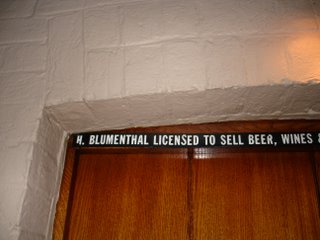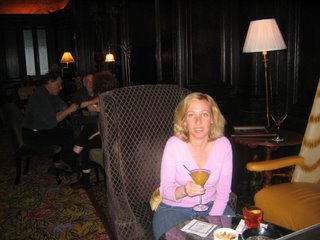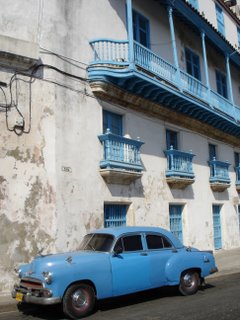 Sitting in the dappled light of the early morning sun, the conversation around the table laden with delicious fruit, yogurt, cakes and fresh coffee, is all about Martha. In 2009, the American TV celebrity and member of what some may term "cooking royalty", Martha Stewart, visited the capital of the Yucatan region of Mexico, Merida. Whilst there she dropped by the house and Los Dos Cooking School in which the international amateur cooks were now eagerly awaiting their chef du jour, David Sterling.
Sitting in the dappled light of the early morning sun, the conversation around the table laden with delicious fruit, yogurt, cakes and fresh coffee, is all about Martha. In 2009, the American TV celebrity and member of what some may term "cooking royalty", Martha Stewart, visited the capital of the Yucatan region of Mexico, Merida. Whilst there she dropped by the house and Los Dos Cooking School in which the international amateur cooks were now eagerly awaiting their chef du jour, David Sterling.  Born in Oklahoma, Sterling, and his partner bought a dilapidated courtyard house in the centre of Merida in 2002. Over the next year, they renovated and restored the house, which has now become their home and base for the Los Dos Cooking School. Wrapped around the pool, the house displays the couple's tasteful furniture and locally commissioned artwork, including a geographically correct 360 degree mural in the dining room of Merida's main square. If you look closely, you can even see the chef. It is the kitchen, however, that beckons with its brightly coloured tiles and deliciously spiced aroma.
Born in Oklahoma, Sterling, and his partner bought a dilapidated courtyard house in the centre of Merida in 2002. Over the next year, they renovated and restored the house, which has now become their home and base for the Los Dos Cooking School. Wrapped around the pool, the house displays the couple's tasteful furniture and locally commissioned artwork, including a geographically correct 360 degree mural in the dining room of Merida's main square. If you look closely, you can even see the chef. It is the kitchen, however, that beckons with its brightly coloured tiles and deliciously spiced aroma.Having some culinary experience as a pantry chef in Michigan, Sterling has pursued his passion for food and immersed himself in the history of Yucatecan regional cuisine. Seated in the elegant dining room, the first part of the day-long class at Los Dos is spent learning more about the influences of the land, the Mayans, the Spanish, the French and the Lebanese on the local cuisine. Budding chef's assistants also learn about the different cooking styles and sample some of the key ingredients, most notably the potent habenero chili.
It's then time to head out and with shopping lists, grocery bags and a bottle of water in hand as the eager disciples follow their leader toward the central market. Here, the group stops for a while to take in the colour, sounds and smells of this lively spot. They are also treated to a sampling of Tacos al Pastor, a dish similar to a doner kebab, except the rotating meat on a spit is made of pork instead of lamb and is served with a chunk of pineapple on top of lightly warmed tacos rather than pita bread.
 What follows feels like a treasure hunt as the group proceeds through the market following Chef Sterling as he makes his purchases of vegetables, spices, herbs and fresh tortillas. The piles of chilis and scramble for hot-off-the-press tortillas are quite a sight.
What follows feels like a treasure hunt as the group proceeds through the market following Chef Sterling as he makes his purchases of vegetables, spices, herbs and fresh tortillas. The piles of chilis and scramble for hot-off-the-press tortillas are quite a sight. Eventually, the lists have been checked off and it's time to head back to the house in a fleet of taxis where fresh juice awaits the thirsty shoppers. After a quick comfort break, the class begins and the group is taught how to make fresh tortillas in the traditional way by a local woman before doing a taste comparison test with those from the market. Homemade is definitely better, and the class creations are later used to create Panuchos, bean-filled tortillas.
Eventually, the lists have been checked off and it's time to head back to the house in a fleet of taxis where fresh juice awaits the thirsty shoppers. After a quick comfort break, the class begins and the group is taught how to make fresh tortillas in the traditional way by a local woman before doing a taste comparison test with those from the market. Homemade is definitely better, and the class creations are later used to create Panuchos, bean-filled tortillas. In the kitchen, Sterling's other helpers assist him and the group to prepare Sikil P'aak, a delicious appetizer made from tomatoes and squash seeds before moving on to the grand dish of the day, Pollo Pibil. Normally, Pibil dishes are cooked in an underground fire-pit but here the red-coloured chicken pieces wrapped in banana leaves are actually cooked in a sealed pot on the stove.
In the kitchen, Sterling's other helpers assist him and the group to prepare Sikil P'aak, a delicious appetizer made from tomatoes and squash seeds before moving on to the grand dish of the day, Pollo Pibil. Normally, Pibil dishes are cooked in an underground fire-pit but here the red-coloured chicken pieces wrapped in banana leaves are actually cooked in a sealed pot on the stove.After all the heat of the kitchen, it is time for a refreshing drink and dip in the pool before lunch, which is served to the guests in the lovely mural-covered dining room. A few extra dishes are served, including a creamy soup and delicious but intriguing papaya dish. Dulce de Papaya was soaked in calcium hydroxide before being served with Edam cheese. It may sound odd but these Yucatecans know a thing or two about flavor combinations.
The convivial group leaves Los Dos with their denim aprons and recipe books in hand vowing to sample more of the region's culinary delights.
Los Dos
Calle 68 No. 517
Por 65 y 67 Colonia Centro
Mérida, Yucatán 97000
México
info@los-dos.com
http://www.los-dos.com/



































 The Bund in Shanghai is a one mile stretch of the western side of the Huangpu River and has been witness to much of the city's turbulant history. The word 'Bund' is thought to originally come from the Urdu word 'band', meaning an embankment, levee or dam, and to have been brought to Shanghai by the hotelier, Victor Sassoon, who built the Cathay Hotel (now called The Peace Hotel) on the corner of The Bund and Nanjing Road. Originally a tow path along the river, the Chinese authorities required 30 feet of space to be left between the water's edge and any buildings constructed along The Bund in order to allow movement up and down the path and account for tidal variation.
The Bund in Shanghai is a one mile stretch of the western side of the Huangpu River and has been witness to much of the city's turbulant history. The word 'Bund' is thought to originally come from the Urdu word 'band', meaning an embankment, levee or dam, and to have been brought to Shanghai by the hotelier, Victor Sassoon, who built the Cathay Hotel (now called The Peace Hotel) on the corner of The Bund and Nanjing Road. Originally a tow path along the river, the Chinese authorities required 30 feet of space to be left between the water's edge and any buildings constructed along The Bund in order to allow movement up and down the path and account for tidal variation.










